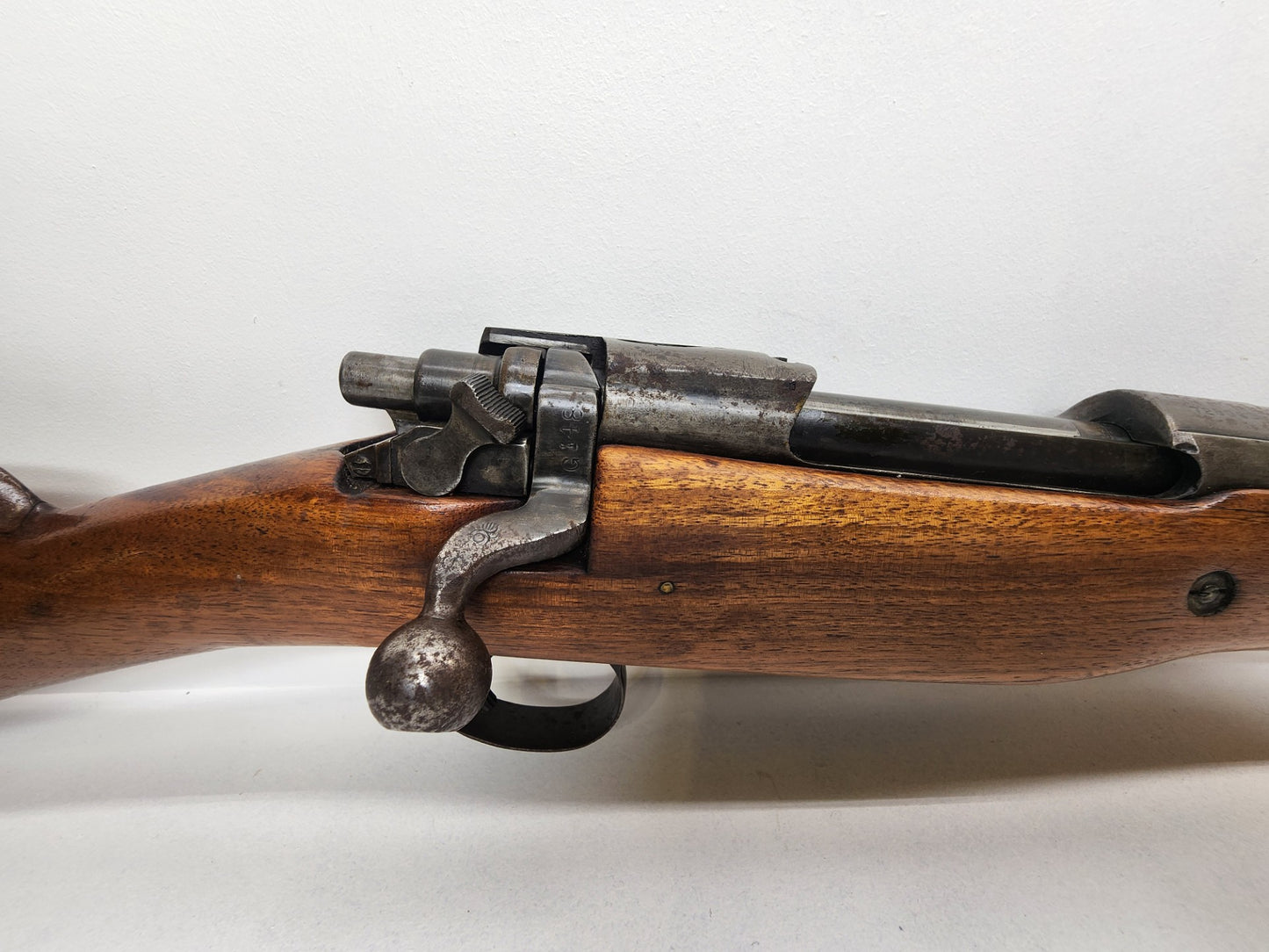Eddystone Model 1917 Sporter
Eddystone Model 1917 Sporter
Eddystone
Couldn't load pickup availability
The Story of the M1917 Rifle
The origins of the M1917 rifle begin in England, where the British sought to replace the Lee-Enfield with a stronger, more robust design. After successful troop trials, the result was the Pattern 1914 Enfield (P14), which was ready for full production. However, British manufacturers lacked the capacity to meet wartime demand, so contracts were issued to American arms companies—including Winchester, Remington, and Eddystone—to produce the new rifles.
Despite the improved long-range accuracy of the P14, British troops were largely dissatisfied with it in the field. Soldiers preferred the faster bolt throw and higher magazine capacity of the familiar Lee-Enfield SMLE, and the project was ultimately shelved in favour of continuing Lee-Enfield production.
Meanwhile, as the United States entered the later stages of the First World War, it became clear that production of the Springfield M1903 could not keep pace with wartime demand. With tooling already in place for the British P14, the Americans found a practical solution.
With only minor modifications—most notably rechambering the rifle for the standard .30-06 Springfield cartridge—the design was adopted as the U.S. Rifle, Calibre .30, Model of 1917, commonly known as the M1917 Enfield or “P17.” The rifle’s action was heavily influenced by the Mauser system, making it one of the strongest and most reliable bolt-action designs of the era.
Although the Springfield M1903 remained the official standard-issue rifle, the M1917 ultimately equipped the majority of American troops during the war. Rugged, accurate, and easier to mass-produce, the M1917 played a crucial role as the principal U.S. service rifle in the First World War.
Share














